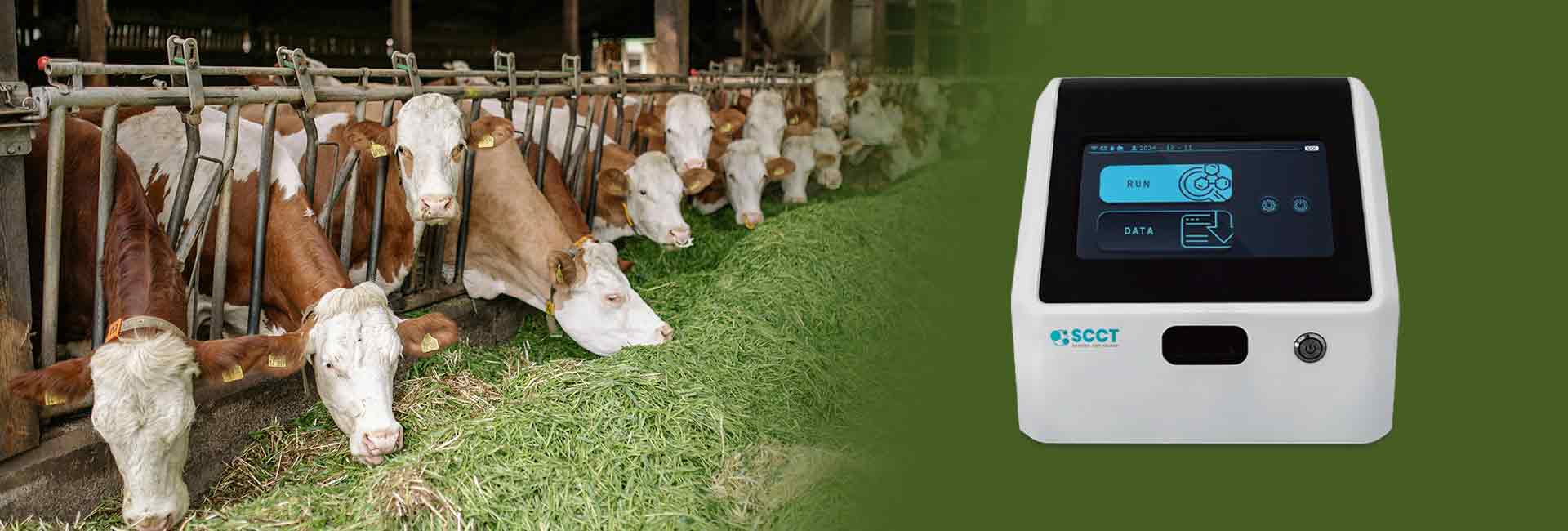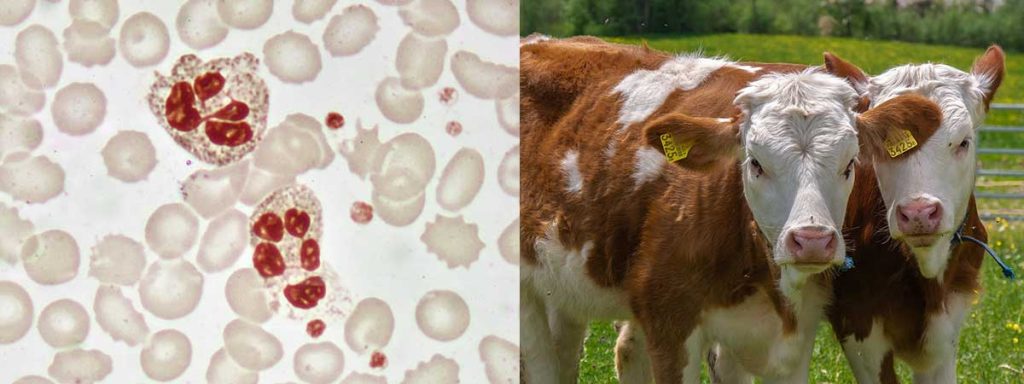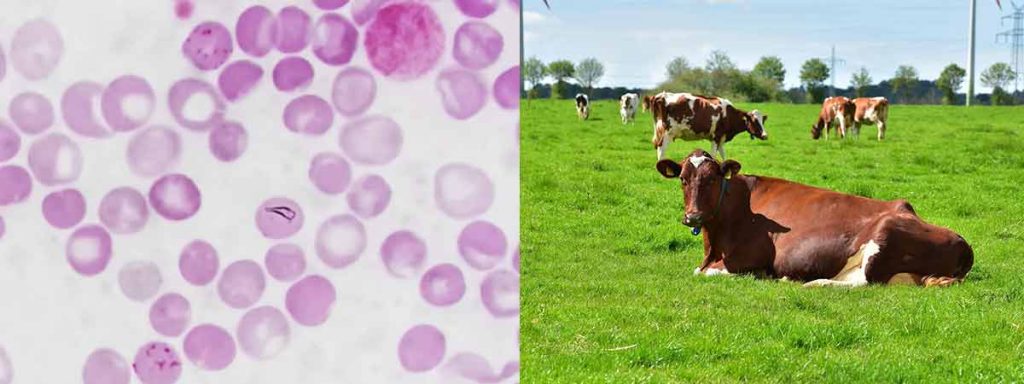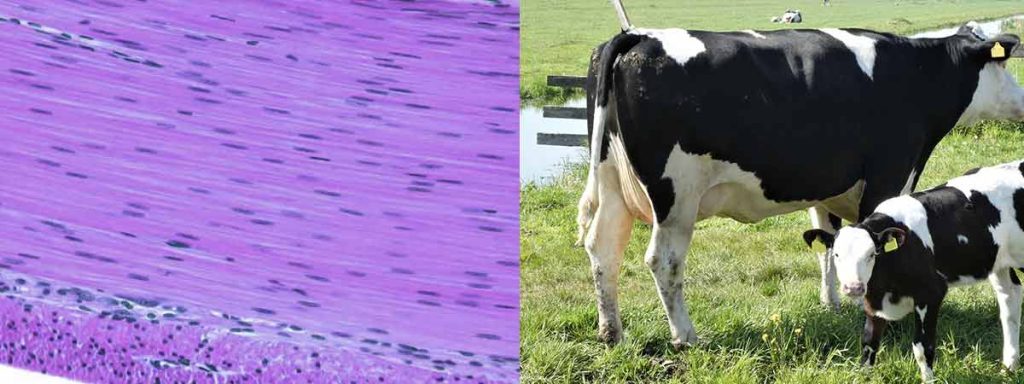

High somatic cell count in dairy cows leads to significant economic losses for dairy farmers, with recent studies reporting an average loss of $533 per farm in just three months due to reduced milk yield and discarded milk. Somatic cell count measures the concentration of cells in milk, serving as a key indicator of udder health and milk quality. Early detection using a somatic cell count tester helps prevent chronic infections, reduces culling rates, and supports compliance with strict export standards, ultimately protecting farm profitability in a competitive market.
Key Takeaways
- High somatic cell count (SCC) in dairy cows causes big financial losses by lowering milk yield and quality, leading to penalties and discarded milk.
- Regular monitoring with a somatic cell count tester helps detect infections early, allowing farmers to treat cows promptly and reduce costs.
- Good farm management, including proper milking hygiene and staff training, lowers SCC and prevents costly mastitis infections.
- Keeping SCC low improves milk prices, increases milk production, and supports long-term herd health and farm profitability.
- Ignoring high SCC leads to higher treatment expenses, more cow replacements, and lower overall farm income, but proactive SCC control can avoid these risks.
Somatic Cell Count
Definition
Somatic cell count serves as a critical measurement in dairy production. It quantifies the number of somatic cells, mainly white blood cells, present in each milliliter of milk. These cells increase when the cow’s immune system responds to infections like mastitis. The following table summarizes the scientific aspects of somatic cell count:
| Aspect | Description |
|---|---|
| Definition | Somatic cell count (SCC) is the number of somatic cells, primarily white blood cells, present in milk, used as an indicator of milk quality and udder health, especially inflammation caused by intramammary infection such as mastitis. |
| Measurement Unit | Cells per milliliter of milk |
| Biological Basis | Increase in SCC reflects immune response to pathogenic bacteria like Staphylococcus aureus causing mastitis. |
| Reference Ranges | Less than 100,000 cells/mL for uninfected cows; greater than 250,000 cells/mL indicates infection. |
| Regulatory Limits | EU, Canada, Australia, New Zealand, Switzerland: ≤ 400,000 cells/mL; USA: ≤ 750,000 cells/mL; Brazil: ≤ 1,000,000 cells/mL |
| Testing Methods | California mastitis test, Bartovation SCC test, and others provide cow-side SCC measurement. |
| Purpose | Assess milk safety, quality, detect subclinical mastitis, and monitor herd health. |
| Additional Notes | SCC originates from inside the udder; bacteria contamination is external. Bulk tank SCC testing averages milk from all cows, while individual testing is now possible with advanced technology. |
A somatic cell count tester allows farmers to measure SCC quickly and accurately, supporting early intervention and better herd management.
Why Does It Matter?
Somatic cell count plays a vital role in both milk quality and dairy herd health.
Many dairy professionals rely on SCC as a benchmark for udder health and milk safety.
- Somatic cell count measures the immune response to mastitis-causing pathogens, signaling udder health.
- SCC thresholds help identify infection: below 100,000 cells/mL means healthy cows, while above 200,000 cells/mL suggests infection.
- High SCC alters milk composition, reducing shelf life, taste, and processing ability for products like cheese and yogurt.
- Milk with SCC above 400,000 cells/mL is unfit for human consumption in many regions, leading to regulatory penalties.
- Monitoring SCC enables early detection of mastitis, allowing farmers to manage herd health and qualify for financial incentives.
- Elevated SCC correlates with lower milk yield, as mastitis damages milk-producing tissue.
- Bulk tank SCC reflects herd health, but individual cow testing with a somatic cell count tester identifies subclinical infections.
Misconceptions about somatic cell count persist in the industry. Some believe SCC equals “pus,” but these cells are mainly white blood cells that protect the udder. Accurate information and regular monitoring help farmers improve milk quality, animal health, and profitability.
High Somatic Cell Count in Dairy Cows
Causes
High somatic cell count in dairy cows results from a combination of biological, environmental, and management factors. The most common cause is intramammary infection, where bacteria invade the udder and trigger an immune response. This response leads to an influx of immune cells, such as neutrophils and macrophages, into the milk, raising the somatic cell count.
- Intramammary infections from pathogens like Staphylococcus aureus, Streptococcus agalactiae, and Trueperella pyogenes often lead to clinical mastitis and high somatic cell counts.
- Multiparous cows, or cows that have calved more than once, tend to show higher somatic cell count in dairy cows compared to first-calf heifers.
- Body condition score and body weight can influence high somatic cell count in milk, with complex interactions depending on the cow’s age and lactation history.
- Seasonal changes, especially during summer and autumn, often result in elevated somatic cell counts due to heat stress and increased pathogen load.
- Farm management practices, including feeding routines and milking hygiene, play a significant role in controlling or exacerbating high somatic cell count in dairy cows.
Note: Subclinical mastitis, which does not show visible symptoms, often causes more economic loss than clinical mastitis because it goes undetected and leads to persistent high somatic cell counts.
Detection Methods
Early and accurate detection of high somatic cell count in dairy cows is essential for effective herd management. Several diagnostic tools and tests are available:
- The California Mastitis Test (CMT) offers a rapid, low-cost way to screen for clinical mastitis and high somatic cell counts at the cow-side. It provides sensitivity rates up to 96%, making it reliable for identifying subclinical infections.
- The Porta SCC milk test and DeLaval cell counter deliver quantitative results and show strong agreement with laboratory standards like the Fossomatic FC.
- Advanced colorimetric methods, such as the OPD-Cu2+ system, allow direct quantification of somatic cells in raw milk. These methods reduce interference from bacteria and improve diagnostic accuracy.
- A somatic cell count tester enables farmers to monitor individual cows and bulk tank milk, supporting timely intervention and reducing the risk of clinical mastitis outbreaks.
Routine use of these detection methods helps dairy producers identify cows with high somatic cell counts before clinical mastitis develops, protecting milk quality and farm profitability.
Economic Impact of Cattle Mastitis
Milk Yield Losses
Cattle mastitis has a direct economic impact on dairy farms by causing significant milk production losses. When somatic cell count score rises, the yield from each cow drops sharply. For every 100,000-cell increase in bulk tank somatic cell count, a cow produces 5.5 pounds less milk per day. Comparing herds with 134,000 and 284,000 cells/mL, the difference in yield reaches 11 pounds per cow daily. This reduction translates into a net income loss of $159 per cow. The following table summarizes these losses:
| SCC Increase (cells/mL) | Milk Yield Loss per Cow (pounds/day) | Example Herd Comparison (cells/mL) | Milk Yield Difference per Cow (pounds/day) | Net Income Loss per Cow ($) |
|---|---|---|---|---|
| 100,000 | 5.5 | 134,000 vs. 284,000 | 11 | 159 |
On a 500-cow farm, the total financial loss to dairy farmers can exceed $79,145 annually due to decreased production. The economic impact of cattle mastitis becomes even more severe when considering the cumulative effect of reduced milk yield across an entire herd. A somatic cell count tester helps farmers identify affected cows early, allowing for timely intervention and minimizing milk production losses.
Quality Penalties
Milk quality suffers when somatic cell count rises, leading to penalties from milk processors and regulatory bodies. These penalties directly affect farm income and the economic impact of cattle mastitis. Milk processors often impose a quality penalty of about 0.02 EUR per liter when SCC exceeds 200,000 cells/mL. Over six months, this results in a penalty difference of approximately 4 EUR per cow. Regulatory agencies enforce strict compliance standards, such as the EU’s 400,000 cells/mL threshold and the US’s 750,000 cells/mL limit. Farms that exceed these limits face not only financial penalties but also the risk of milk rejection, which further increases economic losses.
- Regulatory bodies define noncompliance based on somatic cell count thresholds.
- Noncompliance rates are higher in smaller herds, sometimes reaching 44.5% at the 400,000 cells/mL threshold.
- Farms exceeding SCC limits face penalties and must improve management practices to avoid further financial loss.
High somatic cell count also reduces dairy product quality, affecting cheese yield and shelf life. Cattle mastitis leads to wasted milk, as processors may discard milk that fails to meet quality standards. Regular monitoring with a somatic cell count tester supports compliance and helps maintain milk quality.
Treatment Costs
Treatment costs and decrease in milk production represent a major part of the economic impact of cattle mastitis. The average annual cost of subclinical mastitis in the US stands at about $110 per cow. This figure includes lost production, reduced milk quality premiums, and potential culling expenses. On high-yielding farms, annual treatment costs for mastitis reach approximately $4,380 per farm. The table below outlines typical drug expenditures:
| Cost Aspect | Amount (CAD) |
|---|---|
| Median drug treatment cost (mild/moderate clinical mastitis) | 21 CAD per case |
| Median drug treatment cost (severe clinical mastitis) | 46 CAD per case |
| Total drug expenditure for clinical mastitis treatment | 349 CAD per 100 cows/year |
These costs add up quickly, especially when combined with milk production losses. Early detection using a somatic cell count tester allows for targeted treatment, reducing unnecessary expenses and improving economic outcomes.
Culling and Replacement
Premature culling can be a consequence of cattle mastitis, leading to increased replacement costs and further economic loss. High somatic cell count signals chronic subclinical mastitis, which shortens cow longevity and increases the frequency of culling. Each time a cow leaves the herd due to mastitis, the farm must invest in raising or purchasing a replacement heifer. These replacement costs are not recovered until after the second lactation, making early culling especially costly.
Increased somatic cell count early in lactation raises the risk of culling by about 5% for each unit increase in the natural logarithm of SCC. This trend reduces the average productive lifespan of cows and increases turnover rates. The long-term economic impact of cattle mastitis includes not only immediate losses but also the ongoing burden of higher replacement costs and decreased production potential.
A somatic cell count tester plays a vital role in reducing these losses. By identifying cows with persistently high SCC, farmers can make informed decisions about treatment or culling, improving overall herd health and reducing unnecessary turnover. Effective SCC management supports both economic and animal welfare goals.
Note: The economic impact of cattle mastitis extends beyond direct costs. It affects milk production potential, herd structure, and long-term profitability. Proactive use of a somatic cell count tester helps dairy farms control these financial implications and sustain high milk quality.
Hidden Costs and Indirect Impact
Feed Efficiency
High somatic cell count in dairy cows reduces feed efficiency, creating hidden costs for producers. Cows with elevated somatic cell counts consume similar amounts of feed but produce less milk per unit of feed. For example, a cow with 250,000 cells/mL in her milk produces 1.6 kg less milk each day, even though her feed intake remains steady. This inefficiency means more resources are used for less output, increasing the overall cost of production. Rising somatic cell count also leads to greater energy loss as heat and higher methane emissions, which further decrease the efficiency of energy use for lactation. Early detection with a somatic cell count tester allows farmers to address these issues before they significantly affect yield and farm sustainability.
Reproductive Performance
The impact of high somatic cell count extends to reproductive performance. Cows with elevated somatic cell counts often experience hormonal changes that shorten pregnancy length and may induce premature calving. Increased levels of prostaglandin and decreased progesterone disrupt normal reproductive cycles. These cows may require more artificial inseminations and veterinary interventions, which raises costs and reduces overall herd health. Severe mastitis, indicated by high somatic cell count, lowers the odds of conception and decreases daily milk yield, especially in older cows. Managing somatic cell count with regular monitoring helps maintain reproductive efficiency and supports consistent milk production.
Environmental Effects
Hidden costs from high somatic cell count also include environmental consequences. Reduced feed efficiency means cows generate more waste and greenhouse gases for each unit of milk produced. Increased methane intensity and energy loss contribute to a larger environmental footprint. Discarded milk due to contamination adds to waste, while frequent culling and replacement increase resource use. By using a somatic cell count tester, farmers can minimize these indirect impacts, improve yield, and promote sustainable dairy practices.
Note: Hidden costs from high somatic cell count include increased labor, disrupted routines, and higher replacement expenses. These factors, combined with reduced yield and environmental strain, highlight the importance of proactive management.

Data & Examples
2025 Industry Statistics
Recent studies in 2025 highlight the ongoing challenges and economic risks linked to high somatic cell count in dairy cows.
- A Norwegian study found that Staphylococcus aureus remains the main pathogen affecting somatic cell count, with herd prevalence ranging from 1% to 40%.
- Adjusted thresholds for detecting intramammary infections now vary by parity and lactation stage, from 500,000 cells/mL in first-parity goats early in lactation to 3 million cells/mL in older goats on pasture.
- Herds with more than 10% prevalence of S. aureus face significant bulk milk quality issues.
- Bulk tank somatic cell count (BTSCC) levels above 1.2 million cells/mL trigger premium payment cutoffs and signal higher infection rates.
- Non-infectious factors such as parity distribution, management system, and stress also influence SCC variability.
- High SCC continues to cause economic losses through reduced milk yield and quality, emphasizing the need for early detection and monitoring with a somatic cell count test kit.
Dairy farmers who monitor SCC closely can reduce losses and maintain higher milk quality, which supports long-term profitability.
Real-World Cases
Several case studies illustrate the financial impact of high somatic cell count and the benefits of effective management.
| Aspect | Details |
|---|---|
| Study Location | Sweden |
| Methodology | SimHerd simulation on a 150-cow herd |
| Mastitis Incidence | 32 clinical, 33 subclinical cases per 100 cow-years |
| Avoidable Annual Cost | €8,235 (5% of herd net return) |
| Cost per Case | Clinical: €278; Subclinical: €60 |
| Milk Withdrawal Impact | Withdrawing high SCC milk was never profitable due to lost volume |
| SCC Thresholds Tested | Bulk tank: 180,000–220,000 cells/mL; Individual: 500,000–1,000,000 cells/mL |
| Conclusion | Selling milk with higher SCC led to financial losses, with no gain from withdrawal strategies |
An 11-year analysis in the United States linked higher SCC to lower milk production, reduced pregnancy rates, and increased death losses. Herds in the worst third for SCC (284,000 cells/mL) produced 11 pounds less milk per cow per day than those in the best third (134,000 cells/mL), resulting in a $159 net income difference per cow annually. Farms that reduced SCC from 284,000 to 134,000 cells/mL saw an 11-pound increase in daily milk yield per cow, directly improving profitability. Technologies such as string sampling and aseptic inline sampling systems, along with regular use of a somatic cell count tester, enabled early mastitis detection and better financial outcomes.
Genetic selection and targeted culling based on both milk yield and SCC have also proven effective. Farms that use genomic testing tools and dry cow treatment programs report fewer mastitis cases, longer herd life, and lower treatment costs, all contributing to improved profitability.
Managing High Somatic Cell Count
Monitoring with Somatic Cell Count Tester
Effective monitoring forms the foundation of managing SCC in dairy herds. Somatic cell count tester offers rapid, accurate results, making them essential for both routine checks and targeted diagnostics. Farmers can choose from several methods, each with unique strengths and limitations:
| Method | Setting | Principle / Description | Advantages | Limitations |
|---|---|---|---|---|
| Electric Conductivity | On-farm | Measures milk ionic changes due to mastitis | Portable, affordable, immediate results | Lower sensitivity, does not identify pathogens |
| pH Measurement | Laboratory | Assesses milk pH; inflammation raises alkalinity | Simple, accessible tools | Low sensitivity, no pathogen info |
| California Mastitis Test (CMT) | On-farm | Detects SCC by gel formation | Quick, low cost, tests all quarters | Subjective, sensitivity varies |
| Enzymatic Activity Detection | Lab/On-farm | Measures LDH activity changes | Fast, portable, easy to use | Less accurate than SCC-based tests |
| Direct Microscopic SCC Determination | Laboratory | Visualizes somatic cells with staining | Direct assessment | Time-consuming, needs expertise |
| Automated Somatic Cell Counters | Laboratory | Uses fluorescent dye for automated counting | High throughput, sensitive, objective | Expensive, requires trained staff |
Automated somatic cell count tester systems, such as DeLaval or Fossomatic, allow for high-volume, precise SCC tracking. Regular use helps detect subclinical mastitis early, supporting timely intervention and reducing herd-wide infection risk.
Prevention Strategies
Dairy farms achieve the best results by combining nutritional, management, and milking hygiene practices. The following strategies have proven effective for reducing somatic cell count:
- Supplementing diets with selenium and vitamin E strengthens immune defenses.
- Adding antioxidants and anti-inflammatory agents, such as polyphenols and essential oils, helps modulate udder inflammation.
- Maintaining balanced rations prevents metabolic disorders that can elevate SCC.
- Implementing fore-milking, thorough udder preparation, and post-milking teat disinfection lowers infection rates.
- Using automated milking technologies, like cluster removers and washers, reduces contamination.
- Keeping detailed mastitis treatment records and consulting veterinarians ensures informed decision-making.
- Applying selective dry cow therapy and reviewing multiple milk recording results supports herd health.
- Seasonal calving and involving family members in milking routines can further support lowering SCC.
These comprehensive approaches, when combined with regular monitoring using a somatic cell count tester, create a robust defense against mastitis and support long-term herd productivity.
Staff Training
Well-trained staff play a critical role in managing SCC. Education and structured protocols reduce new infection risks and support consistent practices. The following chart illustrates how different training approaches affect infection rates and bulk tank SCC:
| Staff Training/Management Factor | Effect on New Infection Risk (%) | Effect on Bulk Tank Somatic Cell Count (BTSCC) |
|---|---|---|
| Educated/skilled employees | -0.02% (reduction) | No significant impact |
| SOP in training | -0.16% (reduction) | SOP alone without training increased BTSCC |
| Unskilled employees | +0.02% (increase) | N/A |
| Training by others (no SOP) | +0.05% (increase) | N/A |
| Training by owners (no SOP) | +0.11% (increase) | N/A |
| SOP not integrated into training | +0.15% (increase) | Increased BTSCC |
Staff who receive both education and herd-specific standard operating procedures contribute to reducing new mastitis infections. Motivation and proper training ensure that best practices for managing SCC are consistently applied across the farm.
Economic Benefits of SCC Control
Increased Milk Prices
Dairy farms that maintain low somatic cell count levels consistently achieve higher milk prices. Milk processors reward producers for delivering milk with low SCC because it improves milk quality, shelf life, and flavor. Premiums often reach 5–10% above standard rates for milk under 200,000 cells/mL, while high SCC milk can face penalties up to $2.00 per hundredweight or even rejection. Herds with an average SCC of 134,000 cells/mL produce 11 pounds more milk per cow per day than herds at 284,000 cells/mL. This difference results in an additional $159 in net income per cow each year. The use of a somatic cell count tester allows producers to monitor and maintain these low levels, ensuring access to premium markets and avoiding costly penalties.
| SCC Level (cells/mL) | Milk Production (lbs/cow/day) | Net Income Impact ($/cow) | Milk Price Impact |
|---|---|---|---|
| 134,000 (low SCC) | Baseline | Baseline | Premium (5–10% higher) |
| 284,000 (high SCC) | 11 lbs less | $159 less | Penalties or rejection |
Maintaining low SCC not only boosts milk yield but also secures higher prices and strengthens a farm’s reputation for superior milk quality.
Lower Treatment Costs
Controlling somatic cell count reduces the need for veterinary treatments and antibiotics. Early detection of mastitis with a somatic cell count tester helps farmers address infections before they become severe, lowering both direct medical expenses and the volume of discarded milk. Cows with low SCC require fewer interventions, which means less milk is lost due to withdrawal periods and less money is spent on medications. Farms that keep SCC below industry thresholds also experience fewer chronic infections, leading to improved herd health and reduced replacement costs. These savings, combined with increased productivity and better milk quality, contribute to stronger overall profitability.
| Economic Benefit | Description and Impact |
|---|---|
| Reduced Animal Treatment Costs | Early detection via SCC monitoring lowers veterinary and antibiotic expenses and reduces milk discard losses. |
| Lower Antibiotic Costs | Less medication use results in cleaner milk, preferred by processors and consumers. |
| Improved Herd Reproductive Efficiency | Low SCC supports better fertility and longer productive life, reducing replacement costs. |
Regular use of a somatic cell count tester empowers dairy producers to manage herd health proactively, minimize treatment costs, and deliver high milk quality to the market.
Conclusion

Dairy farms face several economic risks from high somatic cell count:
- Milk rejection or lower payments from processors
- Increased veterinary and treatment costs
- Reduced milk yield and quality premiums
- Financial penalties for exceeding legal SCC limits
- Higher culling and replacement expenses
Regular monitoring with a somatic cell count tester and proactive mastitis control improve milk quality, boost farm income, and support long-term sustainability. Studies show that effective SCC management leads to higher milk prices, better herd health, and greater profitability for dairy operations.
FAQ
What Is A Somatic Cell Count Tester?
A somatic cell count tester is a device that measures the number of somatic cells in milk. Farmers use it to detect mastitis early and monitor udder health. This tool helps maintain milk quality and supports compliance with industry standards.
How Does High Somatic Cell Count Affect Milk Quality?
High somatic cell count reduces milk quality by altering taste, decreasing shelf life, and lowering cheese yield. Processors may reject milk or apply penalties. Regular use of a somatic cell count tester helps farmers avoid these issues and maintain premium milk standards.
Why Should Dairy Farms Monitor Somatic Cell Count Regularly?
Routine monitoring with a somatic cell count tester allows early detection of mastitis. Early intervention reduces treatment costs, prevents milk loss, and improves herd health. Consistent monitoring also helps farms meet regulatory requirements and secure higher milk prices.
Can Staff Training Reduce Somatic Cell Count?
Yes. Well-trained staff follow proper milking hygiene and mastitis prevention protocols. This reduces infection rates and keeps somatic cell count low. Farms that invest in training see fewer mastitis cases and better milk quality.
What Are the Main Economic Risks of Ignoring High Somatic Cell Count?
Ignoring high somatic cell count leads to lower milk yield, increased treatment costs, processor penalties, and higher culling rates. These risks threaten farm profitability. Using a somatic cell count tester helps identify problems early and protects the farm’s bottom line.
